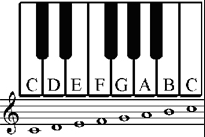Was the resurrection on a Sabbath?
29-04-2014 - Posted by Andre Piet Earlier in this series of blogs about the days of the Passover, I argued that the day of the sheaf of the firstfruit, according to Scripture (not according to Jewish tradition!), by definition, falls on a Sunday, “the day after the Sabbath.” That was the beginning of the omer-counting, a period of time in which one had to count seven Sabbaths. The day after the seventh Sabbath was the feast of weeks or Pentecost: the fiftieth day. The whole period was marked by the counting of Sabbaths (Lev. 23:15). Christ was resurrected, as all the evangel accounts report, on “[day] one of the Sabbaths” (John 20:1). Unfortunately, the translators interpreted this with “the first day of the week.” And indeed, the day was a first day of the week, but that’s not what this expression means. It refers to the beginning of the omer-counting. It is day number one of the counting of the Sabbaths! Scripture used, in this context, not the word “week” (hebdomad), but “Sabbaths.” That the expression would relate to a Sabbath, itself, as some have suggested, seems to me to be excluded. In the first place, “one” (Gr. mian), in the expression “one of the Sabbaths”, decidedly, does not refer to “Sabbaths” (Gr. sabbatoon). “Mian” is a feminine word, whereas “sabbatoon” is neuter. Therefore, the rendering “one of the Sabbaths” is not correct. The number “‘one” is grammatically impossible to refer to “Sabbaths.” Secondly, we read in Luke 23/24:
Earlier in this series of blogs about the days of the Passover, I argued that the day of the sheaf of the firstfruit, according to Scripture (not according to Jewish tradition!), by definition, falls on a Sunday, “the day after the Sabbath.” That was the beginning of the omer-counting, a period of time in which one had to count seven Sabbaths. The day after the seventh Sabbath was the feast of weeks or Pentecost: the fiftieth day. The whole period was marked by the counting of Sabbaths (Lev. 23:15). Christ was resurrected, as all the evangel accounts report, on “[day] one of the Sabbaths” (John 20:1). Unfortunately, the translators interpreted this with “the first day of the week.” And indeed, the day was a first day of the week, but that’s not what this expression means. It refers to the beginning of the omer-counting. It is day number one of the counting of the Sabbaths! Scripture used, in this context, not the word “week” (hebdomad), but “Sabbaths.” That the expression would relate to a Sabbath, itself, as some have suggested, seems to me to be excluded. In the first place, “one” (Gr. mian), in the expression “one of the Sabbaths”, decidedly, does not refer to “Sabbaths” (Gr. sabbatoon). “Mian” is a feminine word, whereas “sabbatoon” is neuter. Therefore, the rendering “one of the Sabbaths” is not correct. The number “‘one” is grammatically impossible to refer to “Sabbaths.” Secondly, we read in Luke 23/24:
56 Now, returning, they make ready spices and attars. And on the sabbath, indeed, they are quiet, according to the precept. 1 Now in the early depths of one [day] of the sabbaths, they, and certain others together with them, came to the tomb, bringing the spices which they make ready.
Where is the logic of the above Scripture quotation, if the day on which the women went to the tomb, likewise would be a Sabbath? Why did the women wait? This information in Luke 24, as I see it, adequately proves that this day was not a Sabbath. The same chapter, Luke 24, provides another indication that the day of the resurrection could, impossibly, be a Sabbath. It was, namely, the day (Luke 24:21) that the travelers from Emmaus made a journey of sixty furlongs (Luke 24:13), which is about 11 kilometers. This exceeded eleven times the distance that one would travel on a Sabbath. A Sabbath day’s journey is about one kilometer (Acts 1:12). No, Christ rose on “the day after the (weekly) Sabbath”. Seven is the number of fullness, a full range of after which follows a new beginning. Think of the seven colors of the rainbow. Or show the seven on the scale after the octave (= eight) follows. No, Christ rose on “the day after the (weekly) Sabbath”. Seven is the number of fullness, a full series, after which follows a new beginning. Just think of the seven colors of the rainbow. Or about the seven tones on the musical scale, after which a new octave (=eight) follows. And why do you think the circumcision took place on the eighth day? Eight speaks of a new beginning. Christ rested on the Sabbath in the grave; all the work was done. His resurrection then announces a new beginning! A new creation! ![]()

 English Blog
English Blog